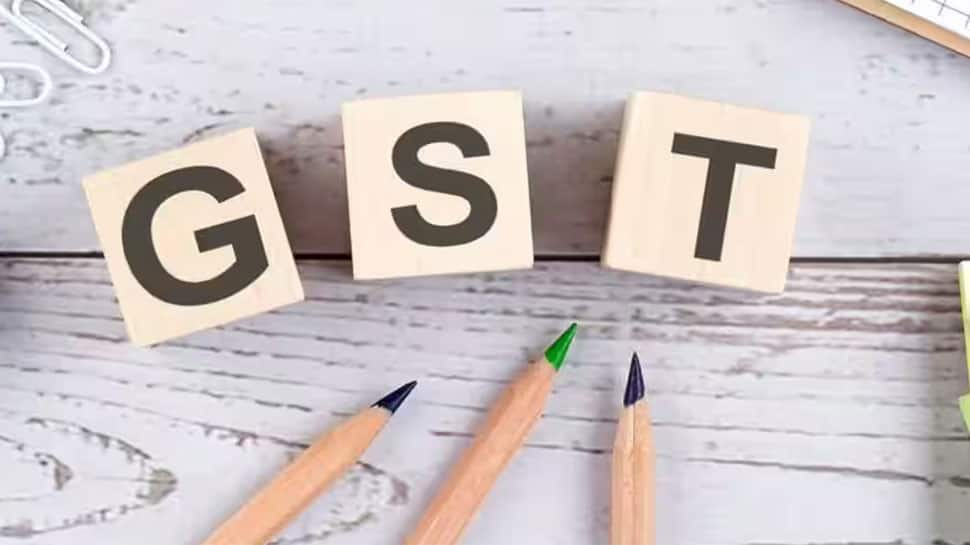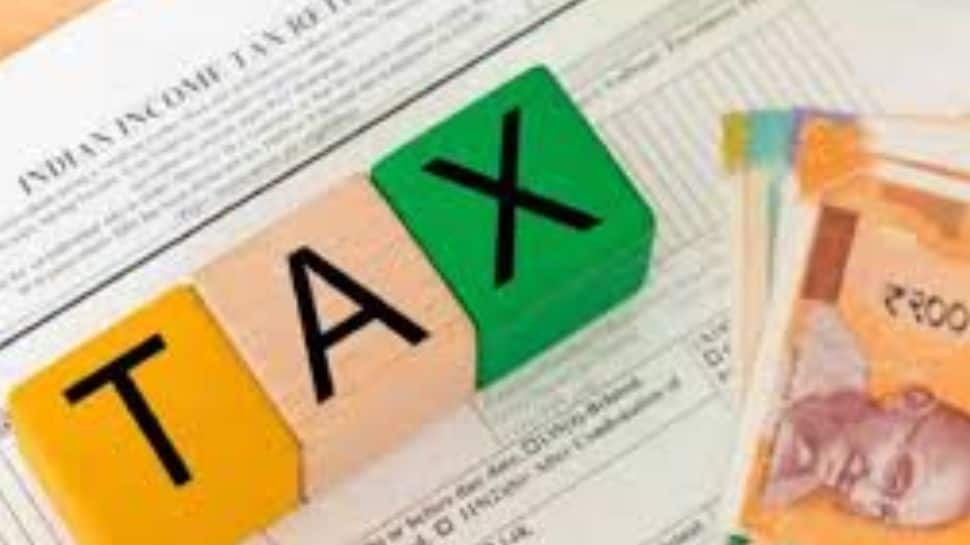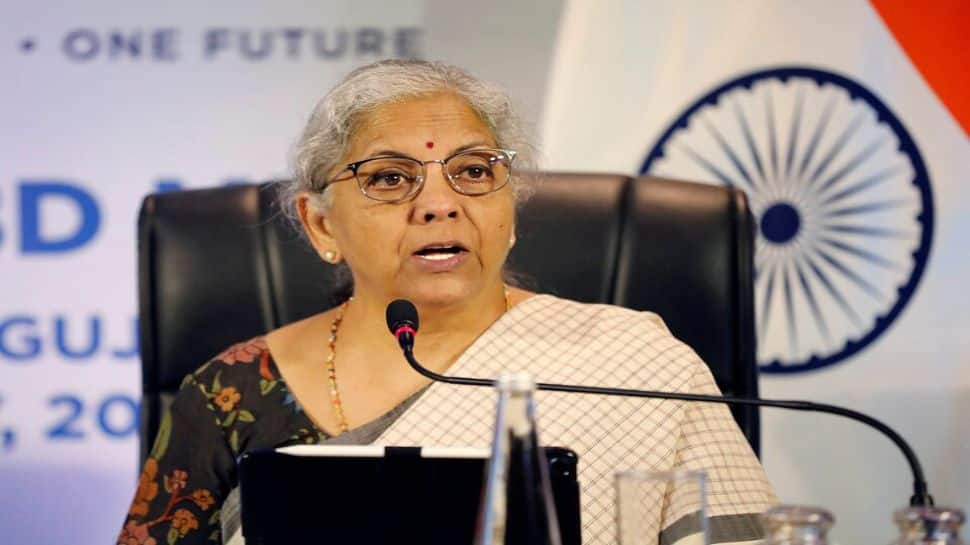Business
Crucial GST Meet Today: Check Timings; All Eyes On Revision Of 2-Slab Tax Structure

New Delhi: GST Council Meeting Today: The 56th meeting of the GST Council will kick off on Tuesday. The 2-day meet between September 3-4 is expected to start at 11 am today. The GST Council will decide on the Group of Minister’s (GoM) proposal to retain two slabs — 5 percent and 18 percent.
As per Indian GST rules, currently a four-slab GST system is followed — 5 percent, 12 percent, 18 percent, and 28 percent — along with an additional cess on sin and luxury goods.
(Also Read: 45% Of Indian Midle-Class Salaries Gone In EMI)
Under the new structure, ‘merit’ goods and services will attract 5 per cent GST, while most other items (standard) will come under an 18 per cent standard rate. A higher 40 per cent levy will remain on a small set of so-called sin goods. Examples include alcohol, tobacco, drugs, gambling, soft drinks, fast food, coffee, sugar, and even pornography.
A sin tax is a special tax that the government puts on such goods. The purpose is to discourage people from using them and to reduce the harm they can cause.
Marking his 12th Independence Day address, Prime Minister Narendra Modi promised a “double Diwali” for citizens this year, hinting at a major economic announcement.
(Also Read: A Few Allowance May Be Abolished In 8th Pay Comission– Here’s Why)
GST Council Meeting: GST Rate Rationalisation 2025
Key areas identified for next-generation reforms include the rationalisation of tax rates to benefit all sections of society, especially the common man, women, students, middle class, and farmers.
Reforms will also seek to reduce classification-related disputes, correcting inverted duty structures in specific sectors, ensuring greater rate stability, and further enhancing ease of doing business. These measures would strengthen key economic sectors, stimulate economic activity, and enable sectoral expansion.
Key Pillars of the Centre’s Proposed GST Reforms:
Pillar 1: Structural reforms:
1. Inverted duty structure correction: The correction of inverted duty structures to align input and output tax rates so that there is a reduction in the accumulation of input tax credit. This would support domestic value addition.
2. Resolving classification issues: Resolve classification issues to streamline rate structures, minimise disputes, simplify compliance processes, and ensure greater equity and consistency across sectors.
3. Stability and Predictability: Provide long-term clarity on rates and policy direction to build industry confidence and support better business planning.
Pillar 2: Rate Rationalisation:
1. Reduction of taxes on common: man items and aspirational goods: This would enhance affordability, boost consumption, and make essential and aspirational goods more accessible to a wider population.
2. Reduction of slabs: Essentially move towards simple tax with 2 slabs – standard and merit. Special rates only for select few items.
3. Compensation Cess: The end of compensation cess has created fiscal space, providing greater flexibility to rationalise and align tax rates within the GST framework for long-term sustainability.
Pillar 3: Ease of Living:
1. Registration: seamless, technology-driven, and time-bound, especially for small businesses and startups.
2. Return: Implement pre-filled returns, thus reducing manual intervention and eliminating mismatches.
3. Refund: Faster and automated processing of refunds for exporters and those with inverted duty structure.
Finance Ministry has said that GST Council meets will deliberate on the recommendations of #GoM, and every effort will be made to facilitate early implementation so that the intended benefits are substantially realised within the current financial year.
Business
Volkswagen capex recalibration: Automaker pares 2030 investment to $186 bn; China, US headwinds grow – The Times of India

Volkswagen Group plans to invest €160 billion ($186 billion) through 2030, a scaled-down outlay that reflects tightening capital allocation as Europe’s largest automaker grapples with mounting pressure in its two biggest markets — China and the United States, Reuters reported.The investment figure, announced by Volkswagen CEO Oliver Blume, is part of the company’s rolling five-year capital expenditure plan, which is updated annually. The latest commitment compares with €165 billion earmarked for 2025–2029 and €180 billion for 2024–2028, with 2024 marking the peak year for spending.Since that peak, the group — which houses brands such as Porsche and Audi — has been squeezed by higher costs and weaker margins, hit by US tariffs on imported vehicles and intensifying competition in China. The strain has been felt most acutely at Porsche, which derives nearly half of its sales from the US and China combined.Porsche recently unveiled a significant rollback of its electric vehicle strategy as profits came under pressure. Speaking to Frankfurter Allgemeine Sonntagszeitung, Blume said the focus of the latest investment plan was firmly “on Germany and Europe,” particularly in products, technology and infrastructure.Blume added that discussions on an extended savings programme at Porsche are expected to continue into 2026. He also said he does not expect Porsche to grow in China, though localising production across the wider Volkswagen group remains an option. A China-specific Porsche model could make sense at some point, he said.On Audi, Blume noted that any decision on building a manufacturing plant in the United States would depend on whether Washington offers substantial financial support.Blume, who will step down as Porsche CEO in January to concentrate fully on running Volkswagen Group, said his recent contract extension as Volkswagen chief executive until 2030 signalled continued backing from the Porsche and Piëch families as well as the German state of Lower Saxony, the company’s largest shareholders.“But it is true, of course, that shareholders have suffered losses since Porsche went public three years ago. I, too, must face up to this criticism,” he said.
Business
Power as ‘currency’: Experts say data centre growth lifts demand; India poised for global leadership – The Times of India

India’s expanding data centre and artificial intelligence ecosystem could position the country as a global leader in power trade, with experts pointing to surplus electricity capacity and rapid reforms in the power distribution sector, according to speakers at a national conference on energy and technology.Speaking at the National Conference on AI and Machine Learning based solutions in the power sector, Jitendra Srivastava, chairman and managing director of REC Limited, said the rapid rise of AI and data centres is creating a new era where electricity itself becomes a strategic asset, according to ANI.“With the exploding growth of artificial intelligence, with the exploding growth of data centres, with the sheer amount of power required to function these places…We are going to see an era when power will be the currency and we are uniquely placed with its huge potential with its already surplus status. We are poised to become world leaders. We are in a position where we can show the world that power is a tradable commodity and we can be global leaders in this,” Srivastava said.The conference brought together solution providers and power distribution companies with the aim of enabling collaboration and innovation. Shashank Mishra, Joint Secretary in the Ministry of Power, said the initiative was designed to create a common platform for developing new solutions.“Today we are bringing together solution providers and distribution companies on a single platform where they can interact and develop new solutions and ideas. We are also presenting several innovative concepts in the form of solutions, and the best among them will be awarded by the Minister of Power,” Mishra told ANI.He added that the government expects the initiative to be “a transformative” step for the sector.Highlighting ongoing reforms, Srivastava said the Ministry of Power has been driving changes under the Revamped Distribution Sector Scheme (RDSS), with smart metering forming a core pillar of the programme. He stressed that the benefits of smart meters can be fully realised only with the use of advanced analytics.“To understand the advantages of smart metering, it is essential to leverage the power of artificial intelligence and machine learning,” he said, adding that such tools can aid anti-theft measures, load forecasting and system rationalisation.According to Srivastava, the conference seeks to demonstrate how AI- and machine learning-based tools can improve consumer services, assist electricity regulators and help discoms function more efficiently.India’s energy sector has strengthened significantly in recent years, balancing rising demand with sustainability goals. Citing International Energy Agency projections, speakers noted that emerging and developing economies will account for about 85 per cent of the growth in global electricity demand over the next three years, with India playing a central role.As of June 2025, India’s total installed power capacity stood at 476 GW, while power shortages have declined sharply from 4.2 per cent in 2013-14 to 0.1 per cent in 2024-25, according to official data.
Business
India Sees 3x Jump In US Smartphone Exports In October

Last Updated:
India’s smartphone exports to the US soared to $1.47 billion in October, with global shipments up 49.35 percent to $15.95 billion.

India smartphone export
India’s smartphone export story continues to get stronger despite a year marked by global tensions and tariff worries. New government data shows that shipments to the US surged more than three times year-on-year (YoY) to $1.47 billion in October, compared to $0.46 billion in the same month last year.
The US market has been a major driver this year. Between April and October, India exported smartphones worth $10.78 billion to Americaa, up sharply from $3.60 billion a year earlier.
The fiscal began on a high note:
April: $1.65 billion
May: $2.29 billion
But shipments dipped through mid-year as the industry adjusted production cycles:
June: $1.99 billion
July: $1.52 billion
August: $0.96 billion
September: $0.88 billion
October brought some stability back, helped by steady demand even as tariff-related uncertainty in the US kept pricing and sentiment on edge.
Interestingly, even during the slowdown months, India’s YoY numbers stayed strong — rising consistently from $0.66 billion in April 2024 to $0.26 billion in September 2024.
Global Exports Also See Robust Growth
India’s smartphone exports worldwide also delivered a strong show. Shipments grew 49.35% to $15.95 billion in April–October 2025, up from $10.68 billion in the same period of the previous year.
Growth stayed in double digits throughout, with standout spikes in:
- May: up 66.54% to $2.96 billion
- June: up 66.61% to $2.68 billion
- September: up 82.27% to $1.68 billion
These numbers highlight India’s fast-growing role in global tech supply chains.
Industry Data Points to a Strengthening Ecosystem
A recent report by the India Cellular and Electronics Association (ICEA) pegged smartphone exports at $1.8 billion in September, nearly 95% higher YoY.
Typically, August and September are slow months due to factory recalibration and seasonal demand patterns. But exports held up unusually well this year — a sign of the maturing manufacturing ecosystem and deeper integration with global brands.
The strong export performance both to the US and globally shows how quickly India is climbing up the electronics value chain. Despite geopolitical tensions and tariff unpredictability, India’s smartphone exports have held firm, pointing to a sector that is becoming more competitive, more resilient, and more central to global supply networks.
December 06, 2025, 17:54 IST
Read More
-

 Tech6 days ago
Tech6 days agoGet Your Steps In From Your Home Office With This Walking Pad—On Sale This Week
-

 Sports6 days ago
Sports6 days agoIndia Triumphs Over South Africa in First ODI Thanks to Kohli’s Heroics – SUCH TV
-

 Fashion5 days ago
Fashion5 days agoResults are in: US Black Friday store visits down, e-visits up, apparel shines
-

 Entertainment5 days ago
Entertainment5 days agoSadie Sink talks about the future of Max in ‘Stranger Things’
-

 Politics6 days ago
Politics6 days agoElon Musk reveals partner’s half-Indian roots, son’s middle name ‘Sekhar’
-

 Tech5 days ago
Tech5 days agoPrague’s City Center Sparkles, Buzzes, and Burns at the Signal Festival
-

 Sports6 days ago
Sports6 days agoBroncos secure thrilling OT victory over Commanders behind clutch performances
-

 Sports6 days ago
Sports6 days agoF1 set for final-race showdown as Verstappen exploits McLaren blunder | The Express Tribune












